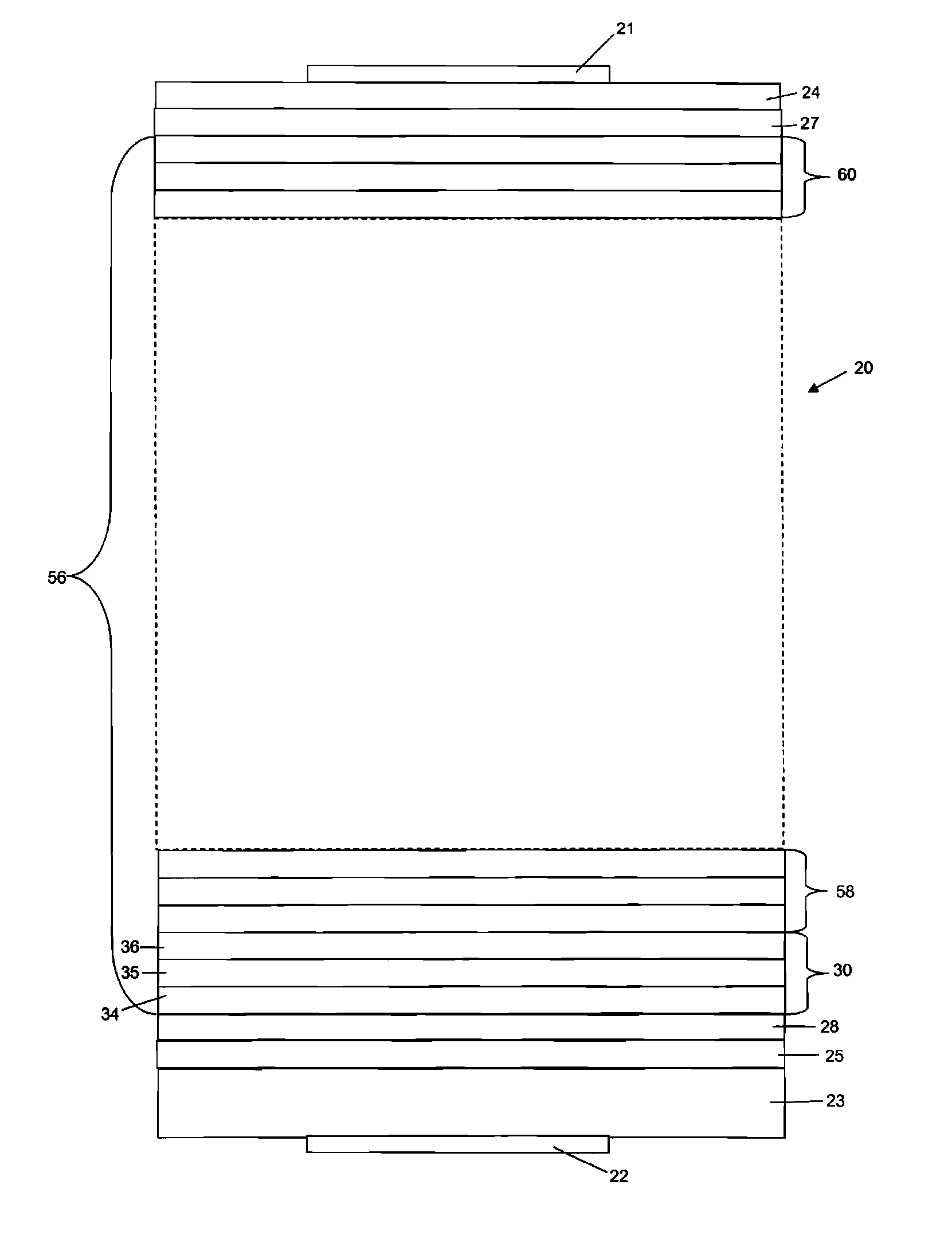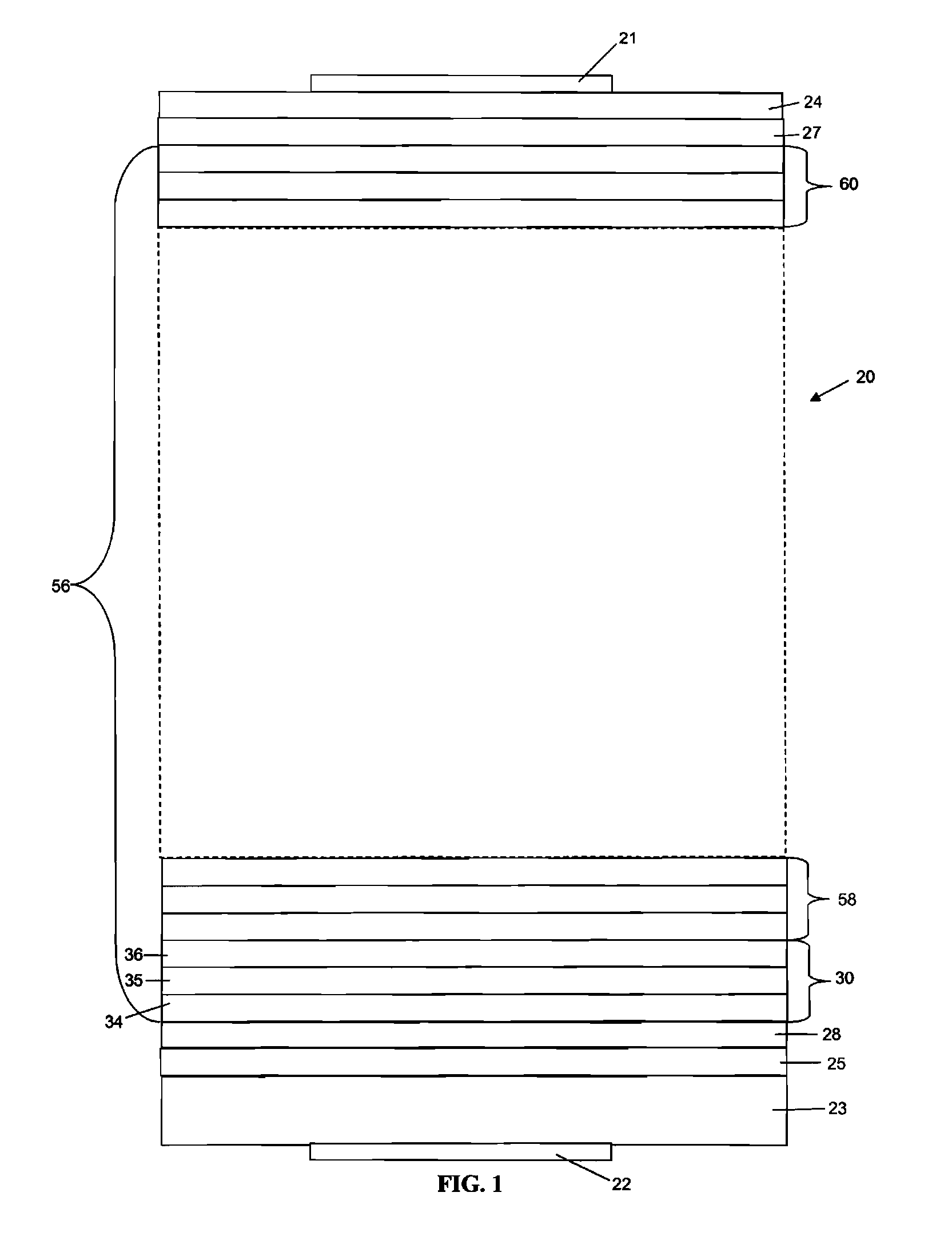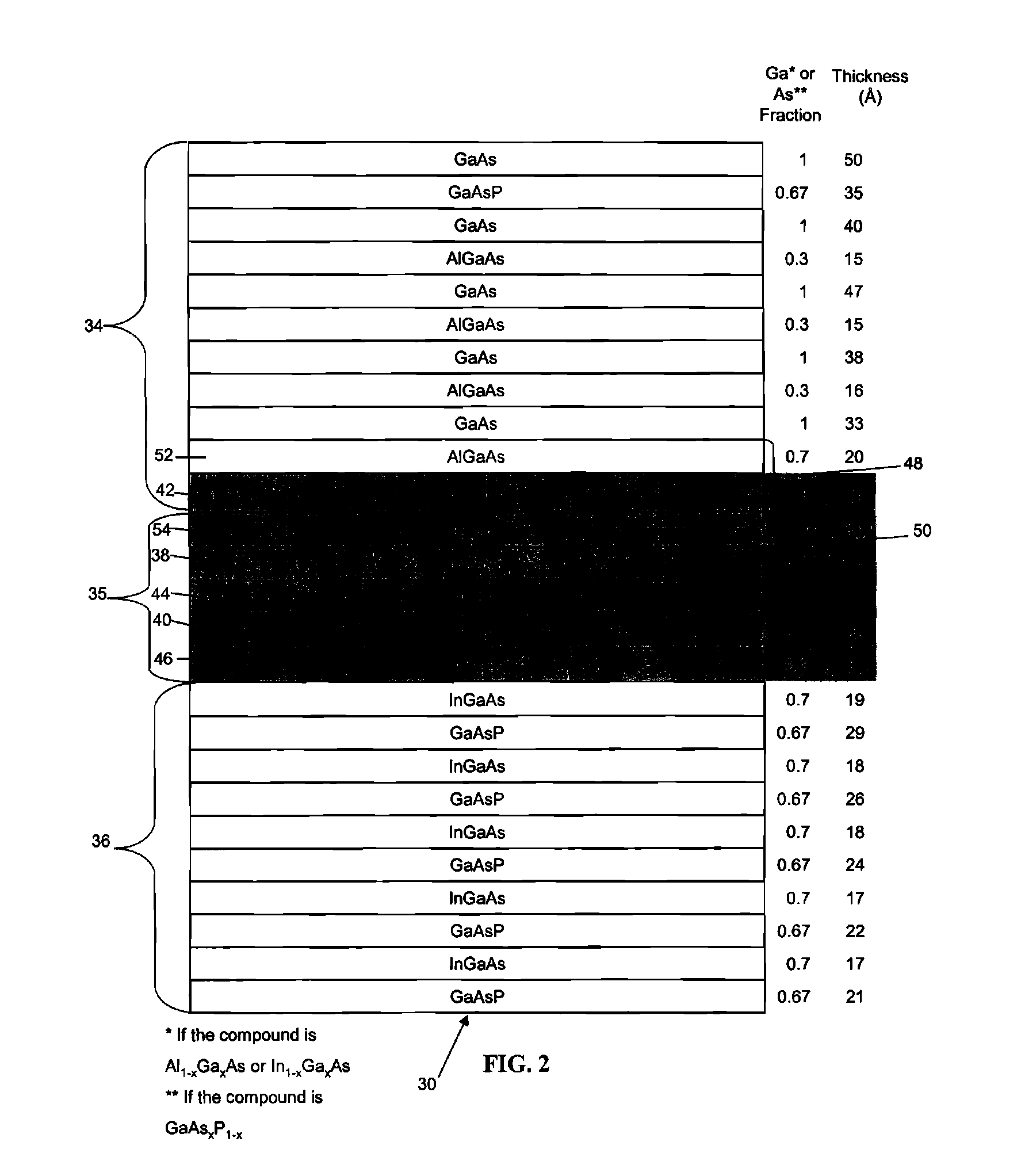High efficiency intersubband semiconductor lasers
a semiconductor laser and high-efficiency technology, applied in semiconductor lasers, laser cooling arrangements, laser details, etc., can solve the problems of low power conversion efficiency (2.5%), severely restricting device design, and very inefficient transitions
- Summary
- Abstract
- Description
- Claims
- Application Information
AI Technical Summary
Benefits of technology
Problems solved by technology
Method used
Image
Examples
Embodiment Construction
[0034] With reference to the drawings, an example of an implementation of the intersubband quantum cascade laser of the present invention is illustrated generally at 20 in FIG. 1, a simplified cross-sectional view through the multi-layer semiconductor structure. For purposes of illustration, the semiconductor laser structure 20 is shown with a top electrode layer 21 and a bottom electrode layer 22, both of which may be formed on the outer faces of the semiconductor structure of, e.g., conducting metal such as aluminum, gold, etc. The structure further includes top and bottom cladding layers 24 and 25, respectively, for example, formed of n-type semiconductor, Adjacent the layers 24 and 25 are semiconductor layers 27 and 28, respectively, which are selected to provide appropriate electrical conduction across them and to have an appropriate index of refraction so as to cooperate with the layers 24 and 25 to provide optical confinement of the emitted light to the region between the lay...
PUM
 Login to View More
Login to View More Abstract
Description
Claims
Application Information
 Login to View More
Login to View More - R&D
- Intellectual Property
- Life Sciences
- Materials
- Tech Scout
- Unparalleled Data Quality
- Higher Quality Content
- 60% Fewer Hallucinations
Browse by: Latest US Patents, China's latest patents, Technical Efficacy Thesaurus, Application Domain, Technology Topic, Popular Technical Reports.
© 2025 PatSnap. All rights reserved.Legal|Privacy policy|Modern Slavery Act Transparency Statement|Sitemap|About US| Contact US: help@patsnap.com



